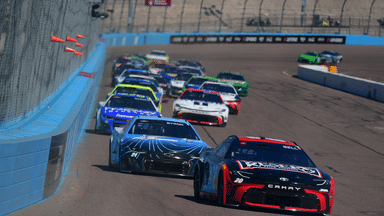Up until 2015, it was common practice for NASCAR to disclose purse details in their race summaries, maintaining transparency on the potential earnings from each race. Previously, the drivers had struck deals with team owners that usually included a base salary along with a share of the race purse, which varied weekly.
Advertisement
However, the landscape underwent a dramatic change in 2016 with the introduction of the Charter System. The new system established 36 ownership charters, each valued based on a team’s historical performance and recent achievements.
Discussing these changes, NASCAR insider and Joe Gibbs Racing team president Dave Alpern explained that compensation for chartered teams now includes a combination of fixed revenue and a variable mix of sources.
- Performance-based incentives that reflect results from the past three seasons.
- A points fund that distributes payments in cash.
- A traditional race purse that still varies based on a driver’s finish in each race.
This revised structure aims to provide a more stable financial environment for teams while still rewarding high performance and consistency.
He detailed the four primary sources of NASCAR’s purse money, explaining, “The first is fixed, which is just as it sounds a fixed amount that’s the same for every team. The second is race purse. Your finishing position pays a certain amount every week based on how you finish the race. There’s a year-end points fund that’s based on your point standings at the end of the year.”
“And the fourth,” Alpern continued, “is called historical which looks at primarily a three-year weighted average of how your team has done historically and those are the four ways that we get paid out our NASCAR Purse.”
Within the team, the race purse is pooled and distributed at each racetrack according to the driver’s finishing position, from first to last place.
The portion of the purse that the race team receives is then divided — a part goes to the team, a part to the driver, and another part is shared among all team employees. The setup is to establish that when one person wins, it’s a victory for the entire team.
How does the TV revenue get split in NASCAR?
NASCAR has secured a TV deal worth $7.7 billion for over seven years, a boon that will disperse programming across four broadcasters — Fox, NBC, Warner Bros. Discovery, and Amazon. Starting in 2025, these networks will collectively air 38 races annually.
But how is the $1.1 billion annual revenue carved up within NASCAR?
According to Alpern, “Our Media Partners pay a fee. That fee gets divided into three buckets. The largest bucket goes to the tracks, the next bucket goes to the teams, and then the league, NASCAR gets a portion as well in their bucket. Of the team bucket which is ours, we split ours with the drivers.”
Within the teams, the allocation continues; they distribute their portion among the drivers, with payouts influenced by both weekly performances and year-end standings. The teams’ earnings are strictly performance-based — the better they perform, the larger their slice of the pie.
Furthermore, with the advent of this new TV media deal, the purse for each race is set to see a significant uptick, enhancing the rewards for competitive performance.




